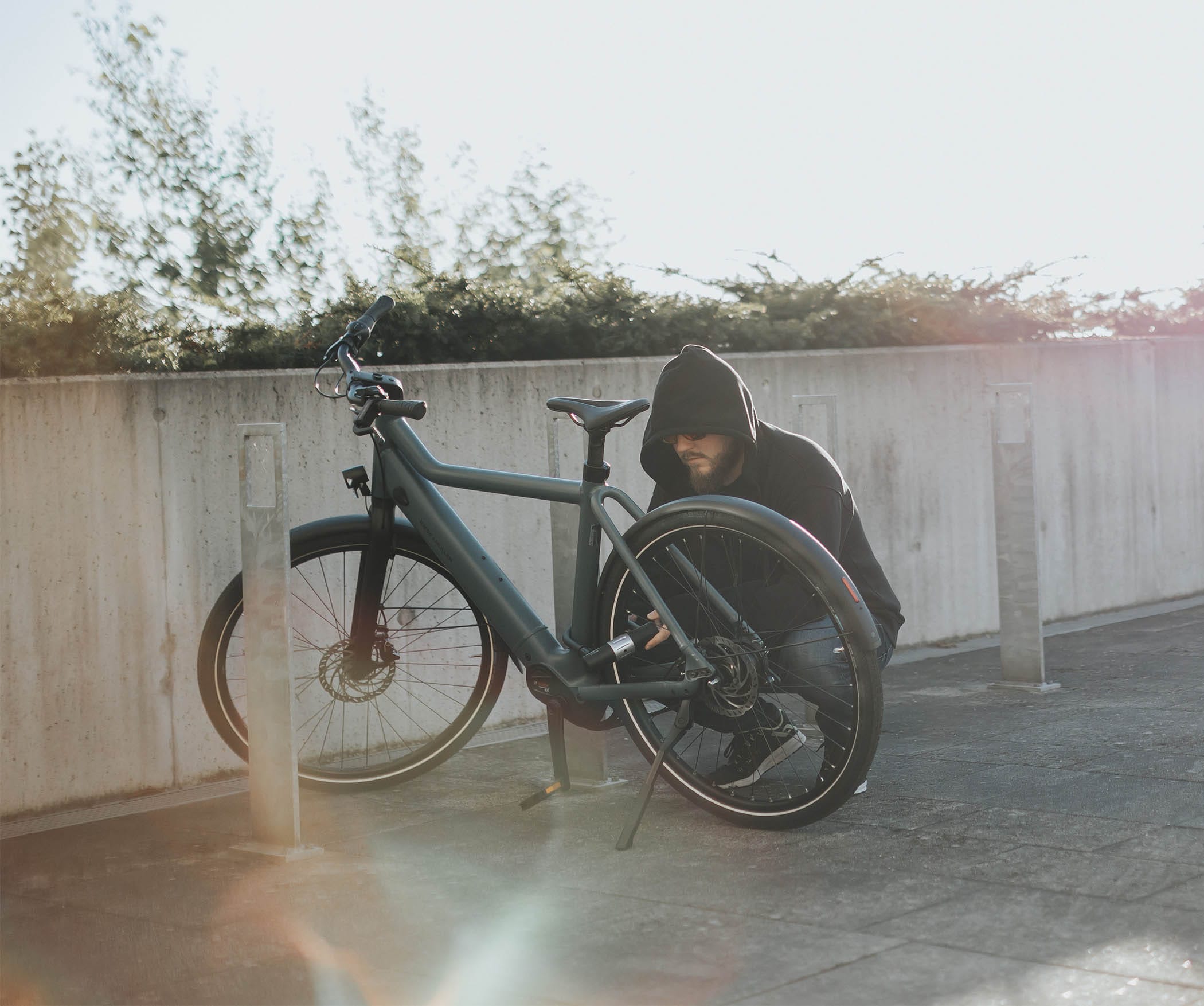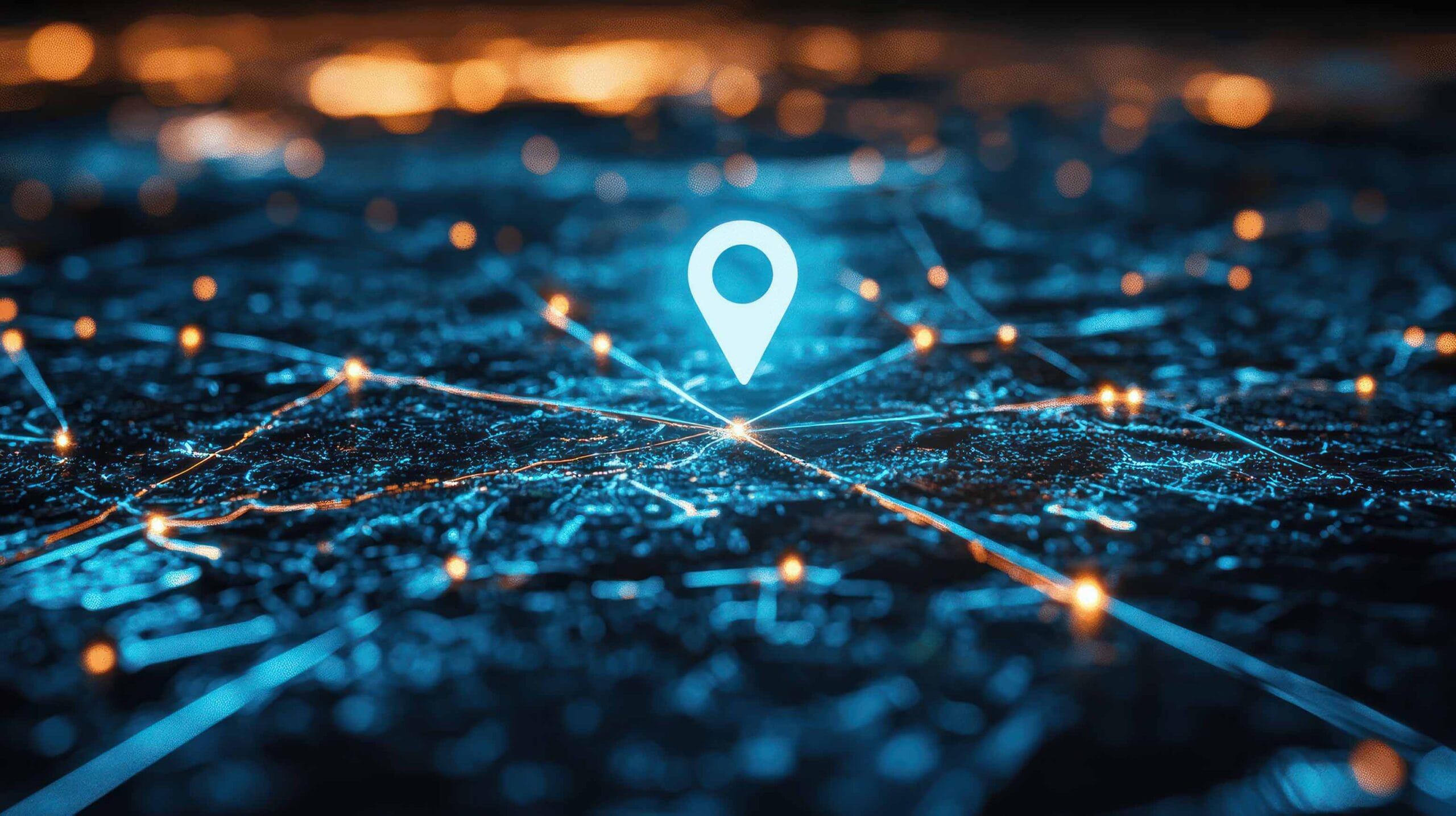

How BikeFinder Signals Work
Understanding the technology that keeps your bike connected, anywhere you ride
Your bike deserves a tracking system as advanced as the world you ride in. The Gen2 tracker from BikeFinder combines several types of signals (GPS, Wi-Fi, LPWAN, and Bluetooth) to keep your bike connected in every environment. Whether it’s parked outdoors, stored underground, or somewhere in between, these signals work together to locate your bike with precision and efficiency. Here’s how each one plays a role.
The power behind BikeFinders multi-signal technology
The Gen2 tracker is built on a unique multi-signal triangulation technology, designed to keep you connected to your bike wherever you ride, or park.
Your tracker automatically seeks out the best available signal to locate your bike, ensuring the most accurate position data while conserving battery life. This means that even if certain signals are weak or unavailable in one area, others will seamlessly take over.
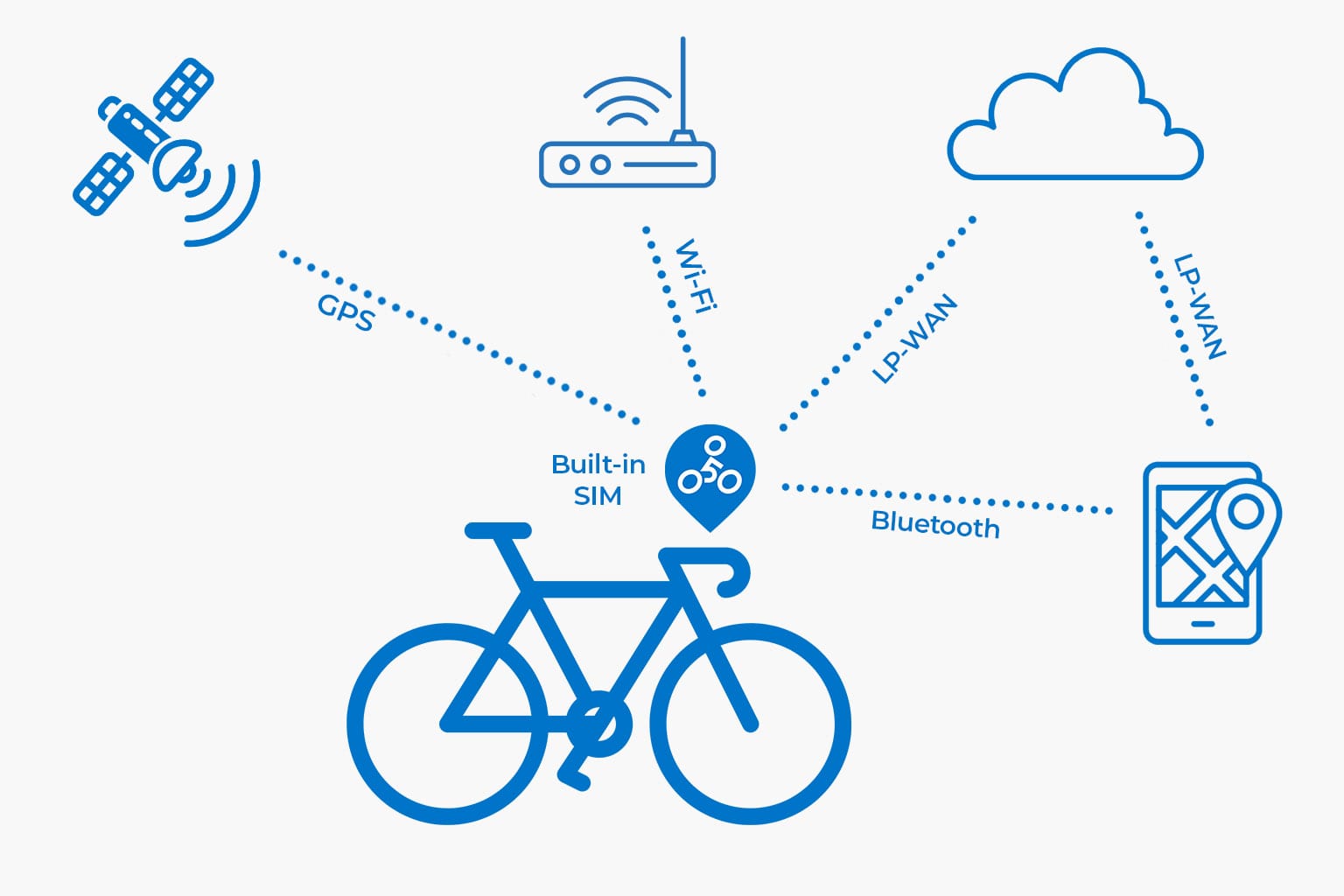
⚙️ Think of it as a smart relay team, when one signal can’t reach, another steps in to make sure your bike’s location stays visible.
GPS & Wi-Fi: your outdoor precision tools
When your bike is outdoors, GPS and Wi-Fi provide the most precise location data. If one signal is unavailable, your tracker automatically switches to the other for the best accuracy possible.
To ensure optimal performance:
- Avoid placing metal parts around the tracker head, as metal can block satellite signals.
- You can check your tracker’s GPS and Wi-Fi reception in the BikeFinder app by opening the history view. In some areas, the tracker may use Wi-Fi as the main signal, while in others it will switch to GPS, depending on which provides the best coverage. Over time, both signal types should appear in your history as the tracker automatically selects the best available signal.
⚙️ GPS accuracy can be affected by tall buildings or underground locations. That’s when the Gen2 tracker’s backup signals come in handy.
LPWAN: long-range, low-power backup
When GPS and Wi-Fi aren’t available, your tracker switches to LPWAN communication.
LPWAN stands for Low-Power Wide-Area Network and includes two key signal types used by your tracker: LTE-M and NB-IoT.
- These signals connect through the cellular network, just like your mobile phone. This ensure that your tracker works independently, without relying on other nearby devices, unlike Bluetooth-only trackers.
- LPWAN is designed for low-power communication, making it ideal for battery-powered devices that need long-lasting performance and efficient energy use.
⚙️ While LPWAN isn’t as pinpoint-accurate as GPS, it ensures your bike’s position continues to update even when other signals can’t reach.
Bluetooth: close-range recovery
Once you’re close to your bike, Bluetooth becomes your best friend.
Bluetooth helps you pinpoint your bike’s exact location, whether it’s inside a building, a garage, or a bike storage area.
Here’s how to use it with the BikeFinder app:
1. Open the BikeFinder app and select your tracker.
2. The distance counter appears on the screen.
3. Make sure Bluetooth is enabled on your phone.
4. As you move, watch the distance counter; it will decrease as you get closer.
5. If the number increases, change direction.
6. If it doesn’t decrease in any direction, your bike might be on another floor (or you might be outside on a different level).
⚙️ It’s like a “hot and cold” game. The closer you get, the smaller the distance shown on the gauge until you’re right next to your bike.
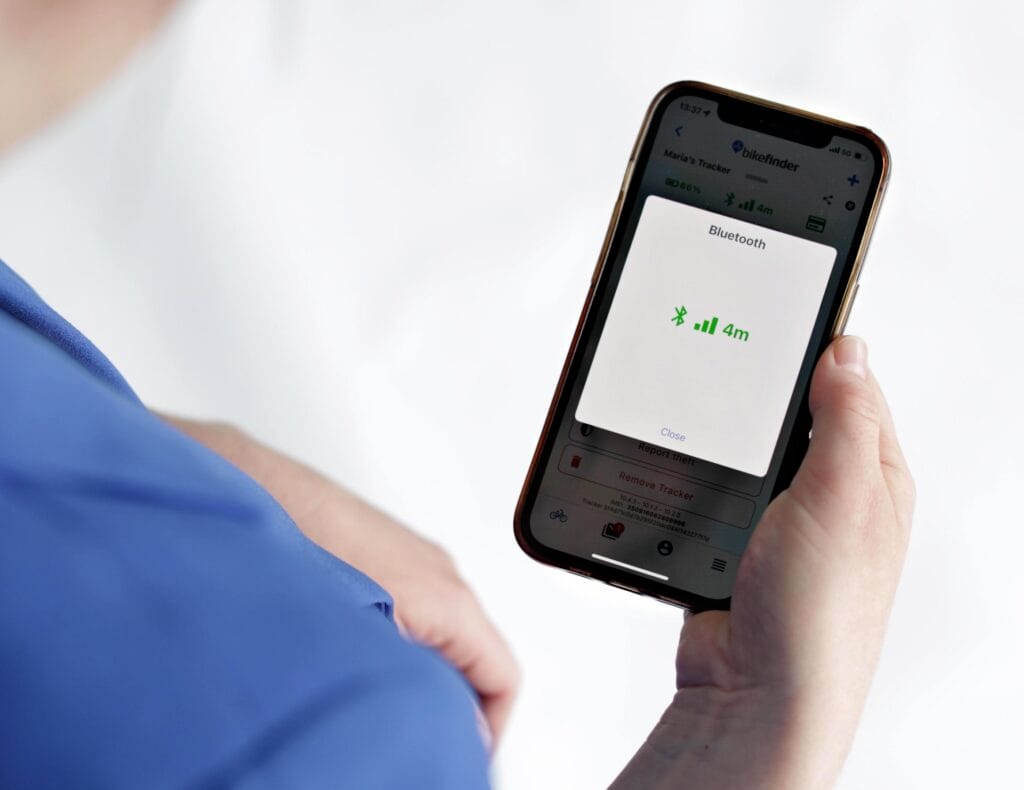
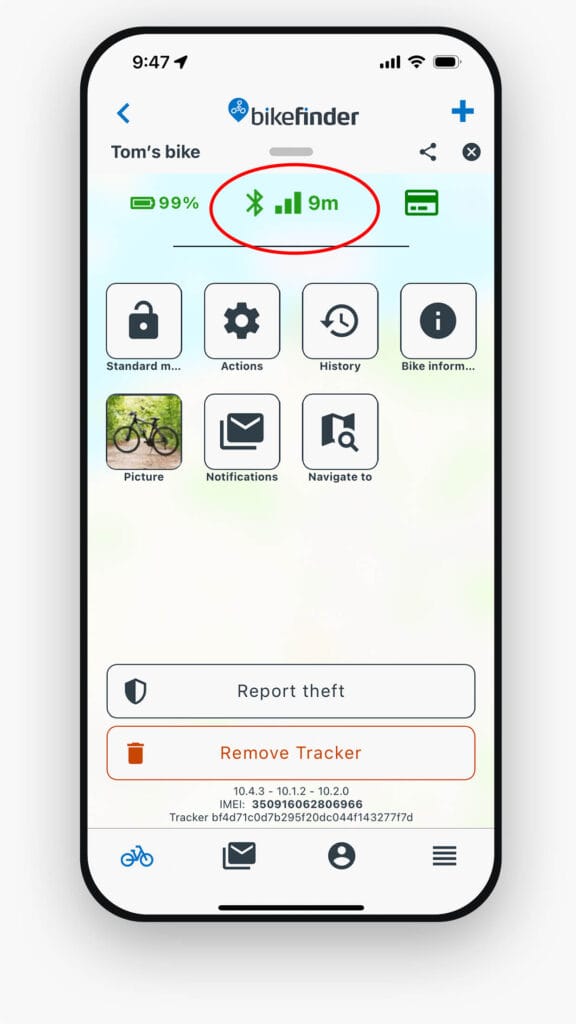
Always connected: in every environment
Every environment poses its own challenges, from tall urban buildings to deep basements or remote trails. With BikeFinder’s multi-signal triangulation technology, you can see your bike’s exact position.
Stay connected: wherever you ride
With the advanced tracker from BikeFinder, your bike stays connected through every ride, city, and signal challenge.
From GPS precision to LPWAN reliability and Bluetooth recovery, your tracker adapts intelligently, so you don’t have to worry about a thing.
Watch the video
Want to see these signals in action?
Click below to watch Anne-Marie explain how BikeFinder’s multi-signal system works and how to make the most of your tracker in real-life situations.

